Flying Bike might still be a dream but we never stop toying around with this idea, just like this Czech company. The brief of this project is to create a flying bike that still has two basic requirements which are all features that common bicycle has such as being able to get to a place convenient for taking off, it should be able to take off for approximately 3-5 minutes in a coordinate way.
This flying bike looks like pretty heavy to us, those big machines not to mention the pilot, hopefully the propellers can perform well, what do you think? This concept design is similar to ultra-light mosquito helicopter.
You can see a physical prototype of this cycling hovercraft in September 2012 at the International Engineering Fair in Brno, Czech.
Designer : DesignYourDreams
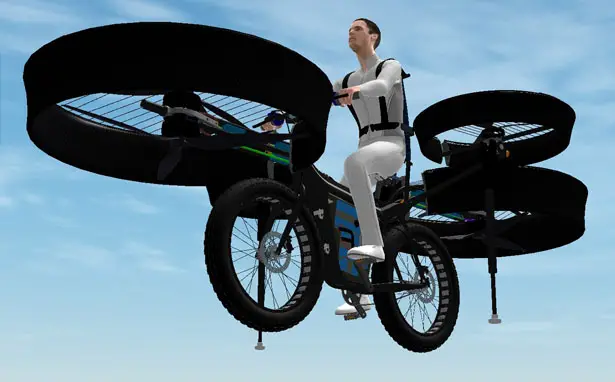
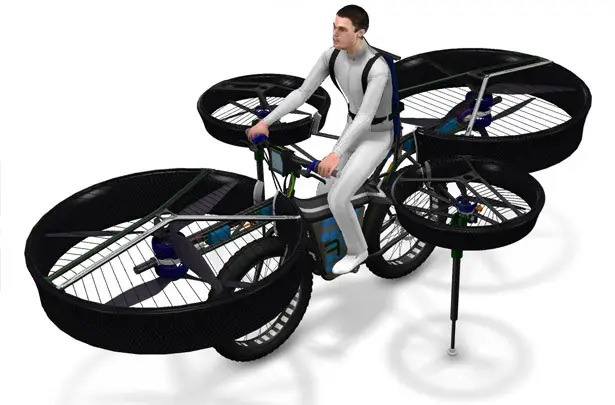
Basic parameters derived mainly from the second requirement. As the takeoff is static, without using the upward lift, there will be rather high demands on the driving units. The first gross calculation of the total weight of the machine including the pilot determined the rough performance necessary for the static suspension to at least 50 kW. It is possible to reach such performance without exceeding the required weight by using compact brushless motors with magnets made of rare soils (neodymium) which have favorable proportion of the weight and the performance. The total performance was originally meant to be divided among four main and four stabilization propeller units. To save the weight two stabilization units were finally omitted.
Another requirement was a control unit which would secure the basic stabilization during the takeoff and would enable the pilot to control the machine in the air. At the same time it was necessary to secure the stabilization of the bicycle during the takeoff and landing – at that moment we considered creating hinged spring-loaded supports.
The last and most important requirement was of course the safety of operation.
Summary of basic requirements for the Flying bike:
- ability to ride in adequate terrain with the aid of the propulsive units (“bicycle” mode)
- ability to perform a short coordinated flight (maximum flight weight is up to 170 kg, using the bicycle components for controlling the flight, “air-cushion vehicle” mode)
- stabilization of the machine during the takeoff and landing (including springing)
- safety of the flight (control of the accumulators capacity, limiting the flight elevation, limiting “dangerous” interference in the control which would lead to an uncoordinated flight or drop)
- stabilization of the pilot (a safety belt, fixed foot-rests, a supportive seat)
The Basic Parameters of the Flying bike:
- total performance: 50 kW
- drive: 4× main motor 10 kW, placed in opposed pairs at the front and at the back in a longitudinal axis; 2× stabilization motor 3,5 kW, placed on revolving consoles at the sides of the bike
- propellers: the main propeller for static thrust, diameter 1300 mm, maximum revs 2500/min, stabilisation propeller, diameter 650 mm, the propellers are surrounded by composite casings
- energy: set of Li-Pol accumulators with total capacity 50 Ah
- frame of the bike: welded part made of light alloy (duralumin)
- bike components: purchased in a standard way
- dimensions: approx. 3500 mm (length) × 2500 mm (width) × 1200 mm (height)
- weight: 85 kg without a pilot
- maximum laden weight: 170 kg
- supposed flight time: 3 – 5 minutes
- supposed riding time: 30 – 50 minutes
- maximum speed limit: 50 km/hour
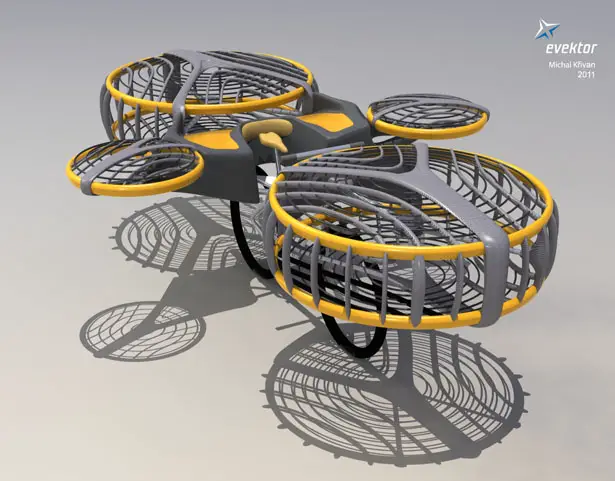
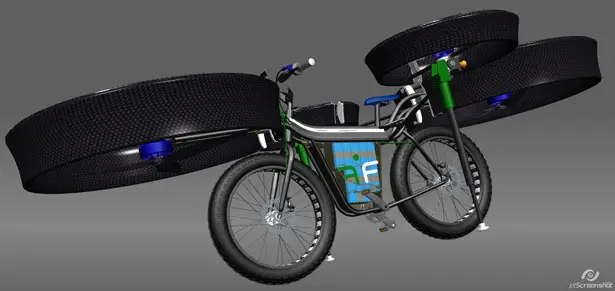
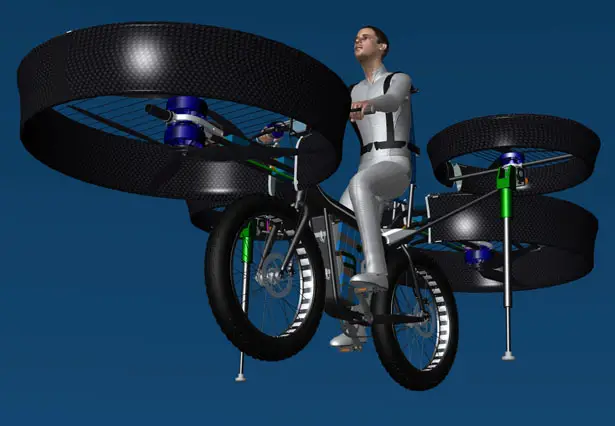
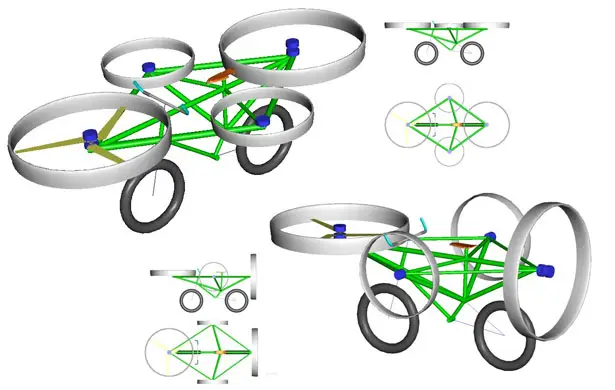
Tuvie has received “Flying Bike” project from our ‘Submit A Design‘ feature, where we welcome our readers to submit their design/concept for publication.








Id ride be awesome touring Hawaii, Australia, Mexico, Caribbean in one & have picnic basket & luiggage module to rear of bike.
Unique
I know how to make it carry more weight by pedaling.